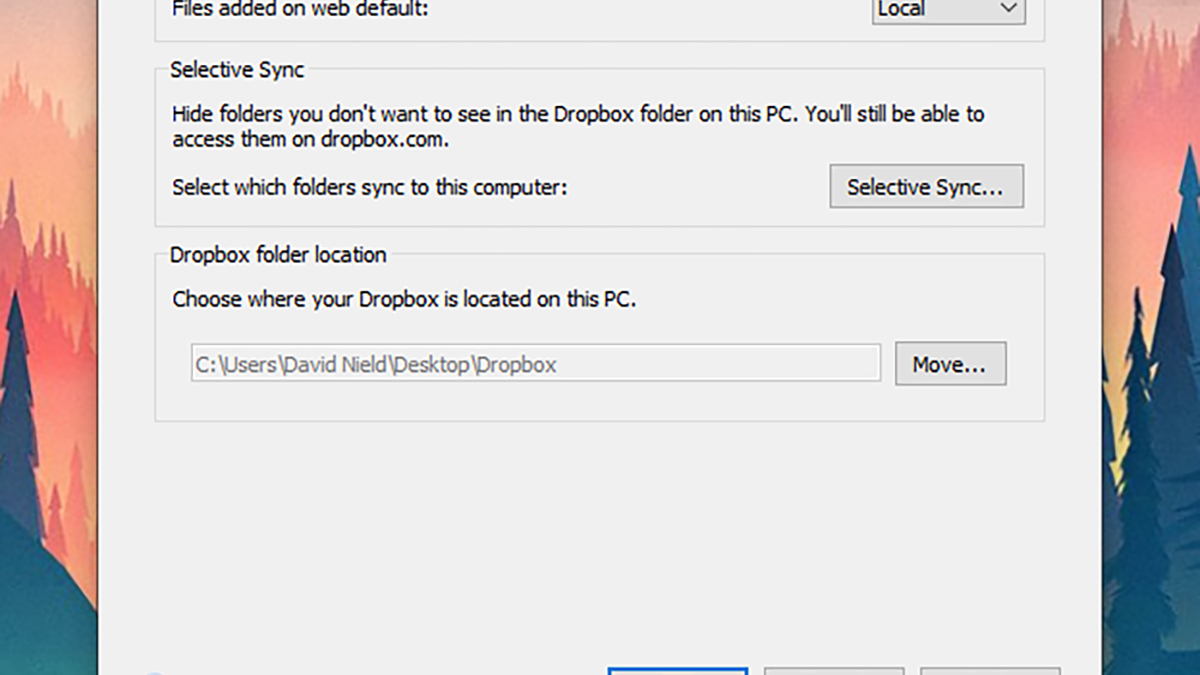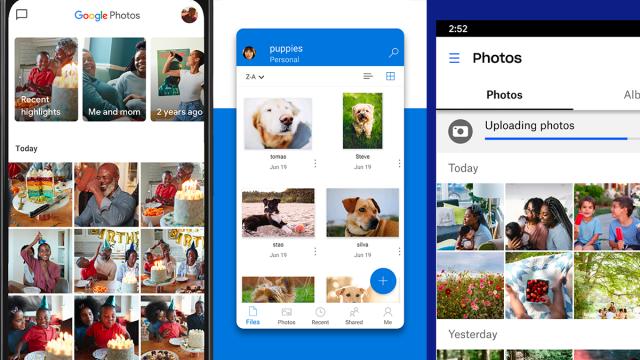The traditional adage is that you need to have three copies of your important files to protect yourself against data loss, but most of us settle for two when it comes to our digital photos and videos. Here’s why you might want to set up a third set of copies, how it can work, and what it’s going to cost you.
One of the ideas behind having three copies of everything is that if something disastrous happens to your originals or your backups, then you’re at least you’re left with more than one set of files until you can get them backed up and copied somewhere else again.
Another good reason to get backups of your backups in place is that cloud storage prices and policies can quickly change: If you want to ditch Google Photos or iCloud, having your photos and videos already uploaded to another service means you don’t have the hassle of transferring them all over in a rush.
There are all kinds of ways to go about this and the best method for you is going to depend on the devices and platforms you’re already using, and what fits in best with how you want to access your files. If you’ve come up with a super-useful, bespoke, multi-app backup setup that works well for you, let us know about it in the comments.
What Your Options Are

While you can opt for two local copies of your photos and videos and one in the cloud — by using external hard drives, or NAS drives, or just having your files on multiple computers — it makes more sense to keep two copies in the cloud. It means your files are accessible from multiple devices and protects you against fires, floods, and thefts happening at home.
There are numerous apps and services to pick from, though you’re always going to have to pay to store a substantial amount of data in the cloud. Google and Apple offer plans that start at pretty low levels: You can get yourself 100 GB of Google One storage for $3 a month, while Apple will sell you 50 GB of space on iCloud for around $1 a month; Google plans go all the way up to 30 TB, while Apple’s top out at 2 TB.
Then there’s Dropbox, which starts its paid plans at $16 a month or $160 a year for 2 TB of room on its servers. Another popular and consumer-friendly option is Microsoft’s OneDrive, which is built into your computer if it runs Windows: You can get 100 GB of space for $3 a month, or stump up $95 a year to get 1 TB of space and Microsoft Office thrown in.
You might also want to consider more conventional cloud backup services, particularly if all your photos and videos are on your laptop or desktop computer. They’ll run in the background of Windows or macOS and suck up everything in the folders that you specify — while web access to your files and mobile syncing isn’t available on all these services, they’ll absolutely do the job when it comes to backing up data to the cloud. Have a look at the likes of Mega, Backblaze, Carbonite and Box, for example, to see if they can play a part in your backup system.
Getting Set Up on Your Phone

Once you’ve paid your monthly subscription fee, having multiple cloud storage backup apps running on your phone is actually pretty straightforward — on the whole they’ll stay out of the way of each other, backing up everything new that arrives in your phone’s camera roll and sending it back safely to the cloud.
Most of the services we’ve already mentioned — the services from Google (via Google Photos), Dropbox, OneDrive, Box, Mega — have simple-to-use apps for Android and iOS that you can install and use. Though iCloud backup is only available on iPhones, so Android users are out of luck there (there is an iCloud client for Windows, however).
Just make sure your apps of choice aren’t automatically deleting or compressing the local copies of your photos and videos, because then the other apps you’ve got installed won’t be able to access them. If you’re using iCloud on your iPhone, for example, go to Photos in iOS Settings and make sure Download and Keep Originals is ticked.
It’s also worth looking through the settings for your chosen apps to make sure they’re covering all the image folders on your device you want them to, and that they’re not all using your data plan for uploads (unless you’re fine with that). In Google Photos, for instance, tap your profile picture (top right) then Photos settings and Back up & sync to pick your folders and set data usage rules.
Getting Set Up on Your Computer

Getting multiple backup services running on a laptop or desktop is more complicated, not least because a lot of applications like to have a separate, specific folder that gets synced to the cloud. You might have to do some folder nesting to get this to work — by moving your local Dropbox folder inside the OneDrive folder in Windows, for example.
If you open up the Dropbox desktop client, then click your avatar (top right) and Preferences, you can set the location of the Dropbox folder on Windows or macOS: Open the Sync tab and click Move to pick a new spot on the drive. You can also set which folders are synced locally, which you will want for your photo and video folders so that other backup apps can get at them.
Those of you using a Mac will have trouble backing up everything in Apple Photos, as it’s set up as a proprietary database. While you can take care of mobile pictures and videos with an app, if there are images that are only on your Mac, you might have to specifically export them to a different folder before backing them up, or just ignore Apple Photos completely and use two other cloud services instead.
There are macOS and Windows clients for Dropbox, OneDrive, Google Drive, and most other cloud services, and an iCloud client for Windows is also available. For the best results, make sure your chosen backup apps are launching at the same time as the operating system, so any changes or new files are synced as quickly as possible.
